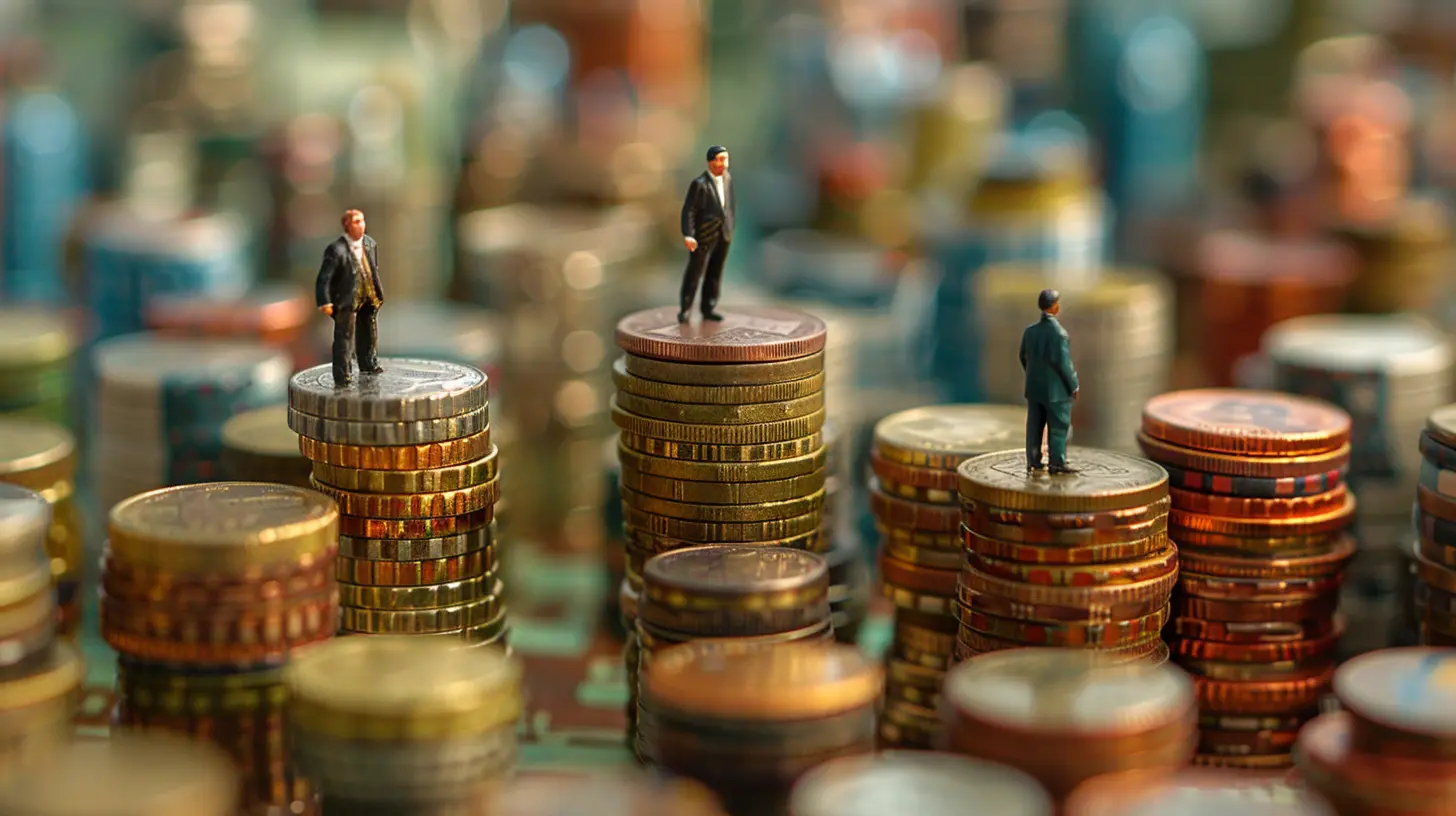Economic Inequality and Its Influence on Social Mobility
16 June 2025
If you've ever wondered why some people seem to beat the odds and climb the economic ladder while others stay stuck at the bottom, you're definitely not alone. This isn’t just about bad luck or poor choices—there's a deeper story here, and at the heart of it lies economic inequality. In this post, we're diving deep into how economic inequality shapes, limits, and sometimes completely blocks social mobility.

What Is Economic Inequality Anyway?
First things first—let’s break it down. Economic inequality is simply the uneven distribution of wealth and income in a society. That means some people have way more money, resources, and opportunities than others. And we’re not just talking about a little gap—we’re talking about a Grand Canyon-sized divide in some places.It shows up in a lot of ways: income differences, disparities in access to housing, gaps in educational opportunities, and even differences in life expectancy. So yeah, it’s a big deal.

Understanding Social Mobility
Now, onto social mobility. This term refers to the ability of individuals or families to move up (or down) the social and economic ladder. Think of it like climbing a career or financial staircase—if the staircase is sturdy and accessible, people have a better shot at reaching higher levels. But if it’s broken, slippery, or missing steps? Good luck making that climb.There are two main types:
- Intergenerational mobility: where your economic status changes from that of your parents.
- Intragenerational mobility: when your own position changes over your lifetime.
We often romanticize stories of people who "came from nothing" and made it big. But the truth is, for many people, especially in unequal societies, that path is almost impossible.

Why the Link Between Inequality and Mobility Matters
Here’s something that might blow your mind: In societies with high economic inequality, social mobility tends to be lower. This concept is sometimes called the "Great Gatsby Curve." You read that right—more inequality usually means less mobility. It’s like playing a game where the rules are rigged from the start.So what’s really going on here?

Barriers Created by Economic Inequality
1. Education: Not a Level Playing Field
Let’s be real: Education is often hailed as the golden ticket to breaking out of poverty. But how do you cash in that ticket when you can't even buy the ride?In low-income communities, public schools are underfunded, overcrowded, and often lack basic resources. Compare that to wealthy neighborhoods with well-funded schools, extracurriculars, tutoring, and college prep. It’s not just apples and oranges—it’s apples and rocket ships.
Even if a kid from a low-income background manages to get through school, the cost of higher education is another huge wall. Student loans? Sure, they exist—but they can leave people buried in debt for decades.
2. Healthcare: Sick and Stuck
When you’re constantly worried about medical bills, it’s hard to focus on anything else. Economic inequality often means unequal access to healthcare, which leads to worse physical and mental health outcomes. And poor health can be a huge barrier to working, studying, or advancing.Imagine trying to climb out of a financial hole while battling chronic illness and medical debt. It’s not just uphill—it’s like climbing Everest in flip-flops.
3. Housing: The Foundation of Stability
Affordable, stable housing is one of the building blocks of upward mobility. But if you're spending half your income on rent or dealing with unsafe living conditions, how can you focus on getting ahead?Worse yet, being stuck in certain neighborhoods—often due to discriminatory practices like redlining—can lock families out of better schools, jobs, and networks. It becomes a cycle that repeats itself generation after generation.
4. Network Effects: Who You Know Matters
Let’s not kid ourselves—success isn’t just about talent and hard work. Who you know (and who knows you) plays a massive role. People in wealthier circles often have access to mentors, internships, job referrals, and professional connections that open doors.If you’re from a low-income background? You might be shut out of those social networks from day one. It’s tough to climb when the ladder is behind a velvet rope.
5. Psychological Toll: The Invisible Burden
Economic inequality also messes with your mindset. Research shows that growing up in poverty can actually affect the way your brain develops, especially how you handle stress and make decisions. That constant scarcity can lead to short-term thinking, anxiety, and burnout.Ever tried to plan for the future when you don’t know if you can pay rent next month? It’s like trying to write a novel while your house is on fire.
Intergenerational Stagnation: When the Cycle Doesn’t Break
Let’s face it—when kids grow up in poverty, they're more likely to stay in poverty as adults. Not because they’re not trying, but because the system is often stacked against them. Without intervention, inequality just gets passed down like a family heirloom.This is where that “bootstrap” myth falls apart. It’s not about pulling yourself up—it's about whether you were ever given boots in the first place.
The Role of Policy and Government
Now here’s where things get interesting. Governments actually have a big say in how much inequality exists—and how much mobility is possible.Progressive Taxation
When taxes are structured to take more from those who can afford it and use that money to invest in public services, everyone benefits. It’s not about punishing the rich—it’s about giving everyone a fair shot.Access to Quality Education
Investing in early childhood education, reducing class sizes, improving teacher pay—these aren’t just slogans. They’re concrete ways to level the playing field.Affordable Healthcare and Housing
Policies that make healthcare and housing more accessible aren’t just about compassion. They’re about giving people the stability they need to grow.Paid Family Leave and Childcare
Families shouldn't have to choose between putting food on the table and staying home with a sick child. Supporting families is key to breaking cycles of poverty.What Can We Do About It?
It’s easy to feel overwhelmed or even helpless when you look at the size of the problem. But change doesn't always have to start at the top—it can start with us.- Support local organizations focused on education and community development.
- Vote for policies and leaders who prioritize inequality and mobility.
- Talk about it! Conversations bring awareness and awareness leads to action.
- Challenge the myths. Success stories are inspiring, but they shouldn’t be used to ignore all the people left behind.
Final Thoughts: A Fairer Ladder for All
At the end of the day, a society that offers meaningful social mobility is a healthier, more dynamic, and more just place for everyone. Economic inequality isn’t just a personal setback for those at the bottom—it weakens the very fabric of society.The American Dream (or any national dream) only works if everyone has the tools and opportunity to chase it. Right now, that dream feels out of reach for too many. The good news? It doesn’t have to be.
By recognizing the real barriers inequality creates and working together to remove them, we give everyone—not just the lucky few—a fighting chance to climb.
all images in this post were generated using AI tools
Category:
Income InequalityAuthor:

Zavier Larsen
Discussion
rate this article
2 comments
Clementine Riley
Economic inequality stifles social mobility, creating a cycle that hinders potential. Addressing these disparities is crucial for fostering opportunities and enhancing societal cohesion, ultimately benefiting the economy as a whole.
June 19, 2025 at 4:27 AM

Zavier Larsen
Thank you for your insightful comment! I completely agree that addressing economic inequality is vital for enhancing social mobility and overall societal well-being.
Dylan Romero
This article effectively highlights how economic inequality hinders social mobility, emphasizing the need for policies that promote equitable opportunities for all.
June 17, 2025 at 4:06 AM

Zavier Larsen
Thank you for your feedback! I'm glad you found the article's focus on policies for equitable opportunities relevant to the discussion on economic inequality and social mobility.


